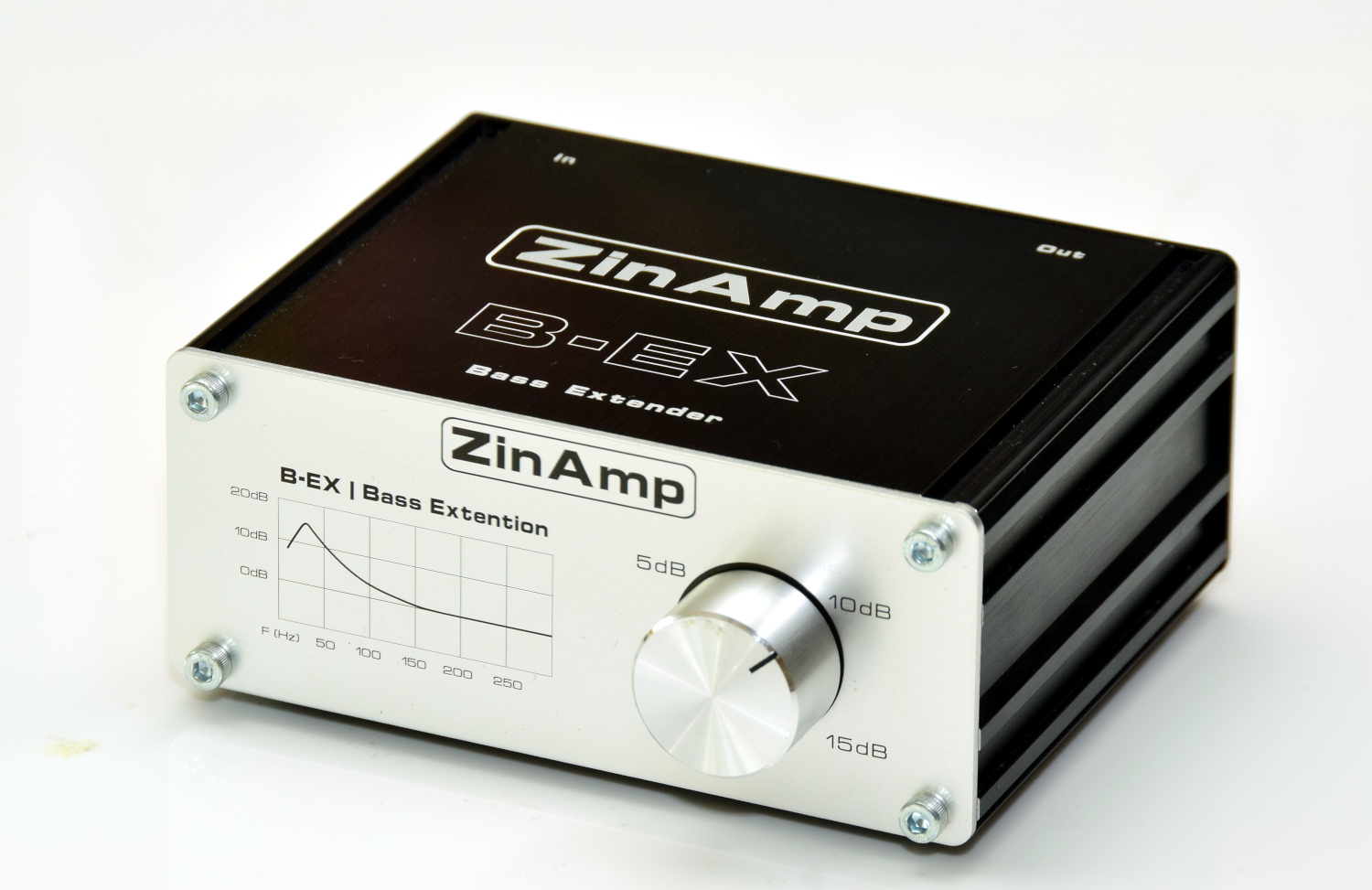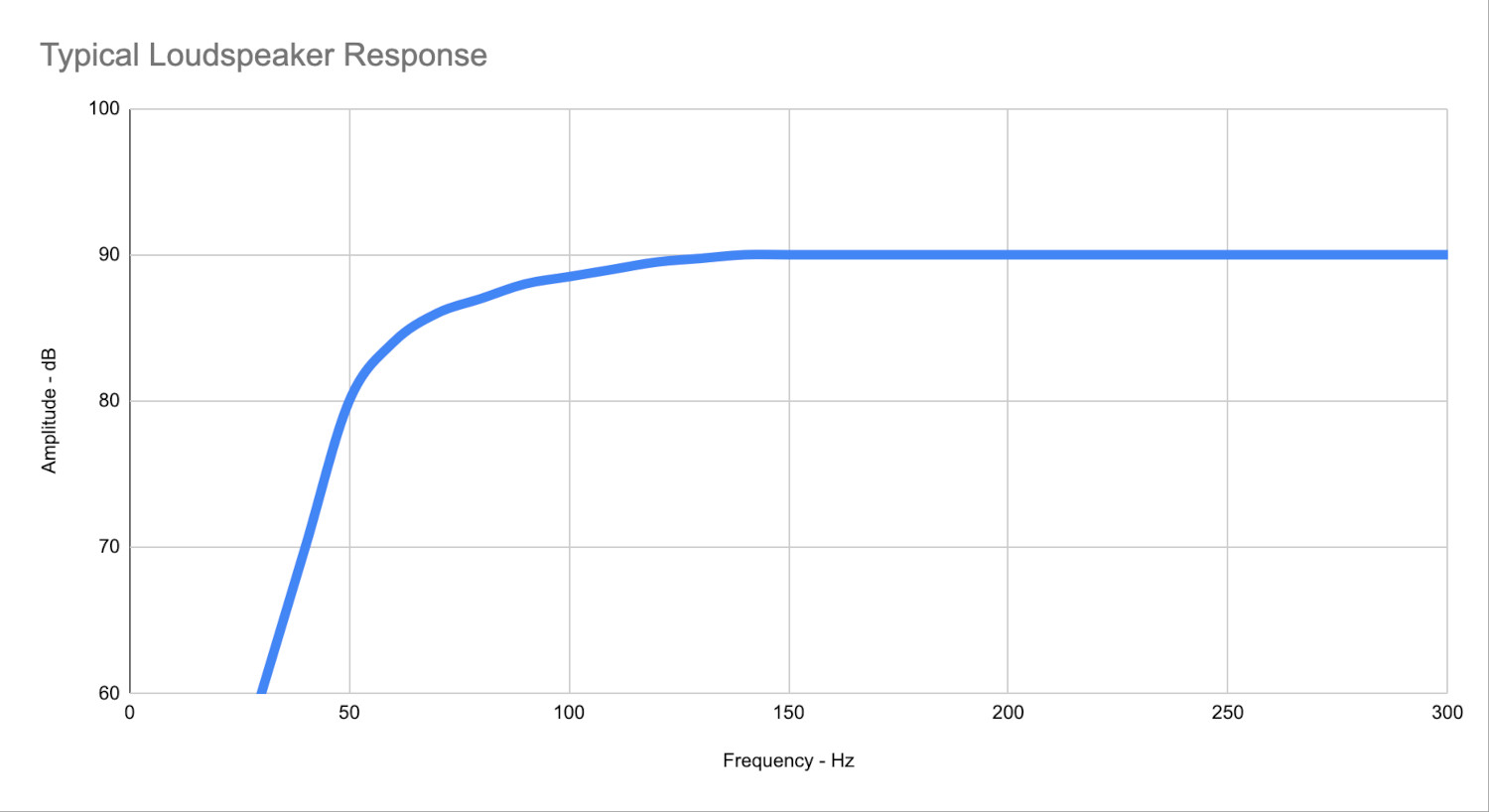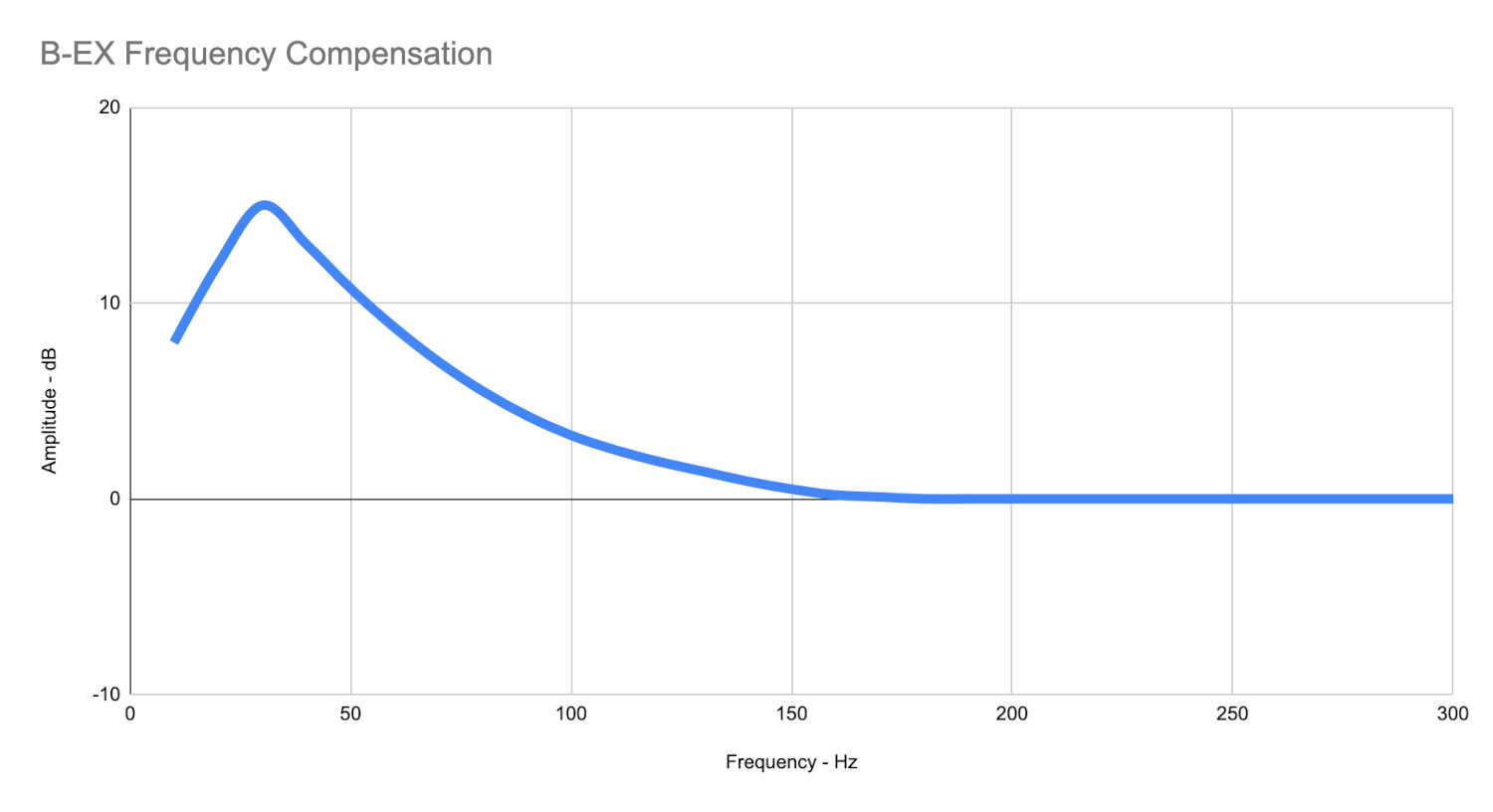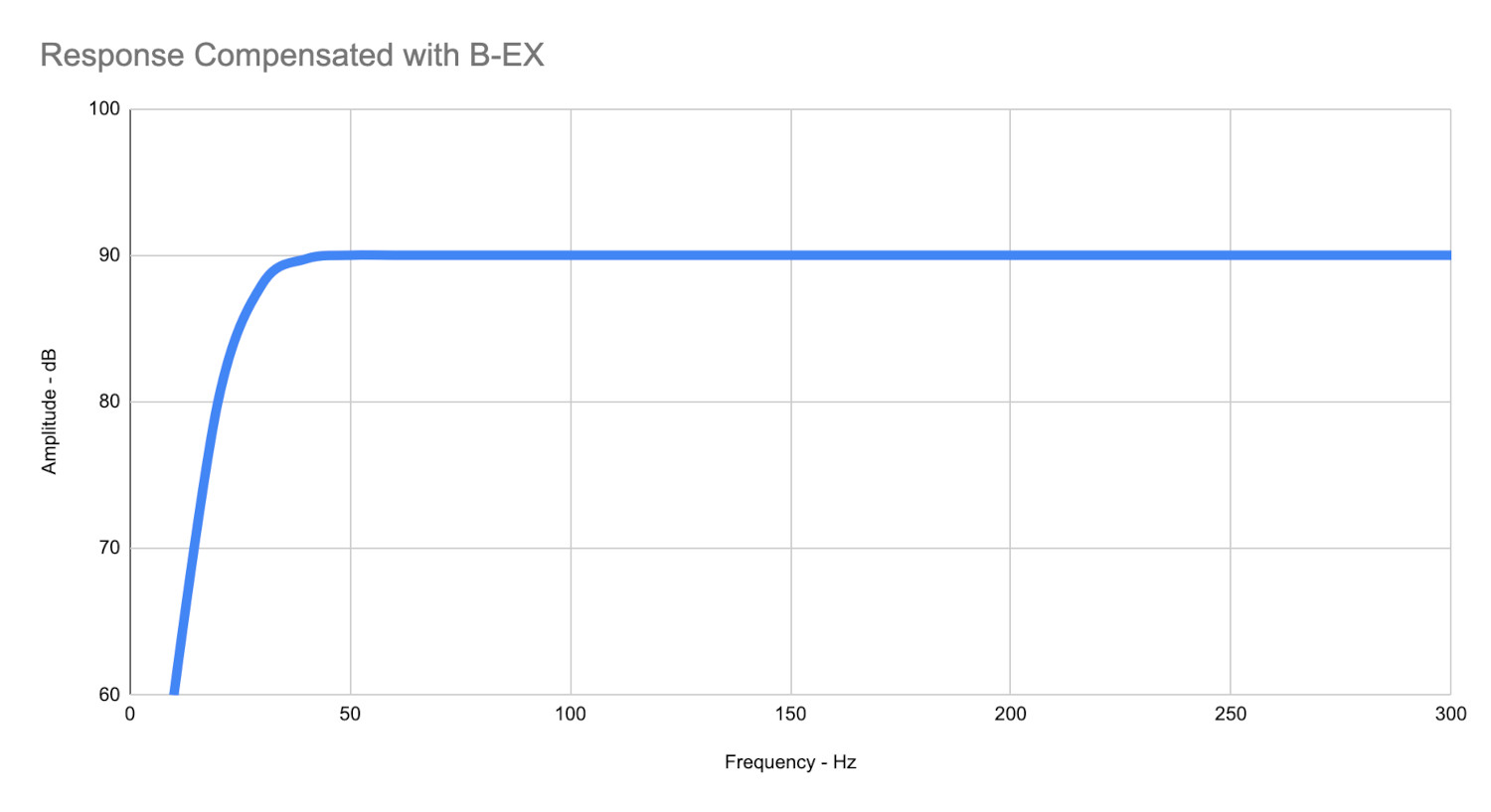
|

|
|

|
|
Introducing the B-EX Bass ExtentderB-EX is designed to extend the low frequency 'reach' of your amplifier and speakers. Whist your amplifier maybe capable of a flat response down to 20 or 30Hz, your speakers are not. B-EX works in a similar way to a Linkwitz transform circuit, but wheras the Linkwitz circuit is fixed, B-EX is adjustable. Most domestic speakers begin to lose response below about 100Hz - especially sealed cabinets which can begin to roll off below 150Hz. This is one of the reasons why subwoofers are popular. B-EX addreses this problem by rolling "up" the low-frequency signal below 150Hz to offset the speaker's natural roll-off, giving a flat response down to 50Hz and in some cases, beyond. The B-EX Bass Exetender is installed upstream of your main amplifier; either after the source or between pre-amp and power amp. B-EX is also available as an option on ZinAmp's Pre-Amps and Integrateds. The amount of Bass Extention is controlled with a dial, from 0dB to 15dB This is very different from bass & treble controls which can alter frequency response in unwanted ways. B-EX actively increases a very specific part of the audio band i.e. below 150Hz. An additional high-pass filter ensures the signal below 15Hz rolls away sharply, so your speakers are not at risk of damage from over-excursion. The result is a full and deep bass sound with a tight response. It isn't boomy or floor-shaking! It's a pleasing effect that becomes more noticable with repeat listens as new low-frequencies reveal themselves in the music. Because B-EX is adjustable, it can be used to control bass-response with different recordings and sources - some of which may have been mastered with more bass than others. Some speakers require more compensation than others too. B-EX allows full control from zero to 15dB of bass uplift. How Does it Work?The first graph titled 'Typical Loudspeaker Response' shows the response of a pair of 'typical' loudspeakers with 8" woofers. The response begins to roll off from about 150Hz and by 50Hz we're down by nearly 10dB. By 30Hz, we've lost 40dB. |
|



The next graph titled 'B-EX Frequency Compensation' shows the frequency response of B-EX. The signal below 150Hz curves upwards. This is the opposite of the response of our speaker.
Note: The exact respose curve you will achieve with your speakers may vary slighlty depending on make, model and size. However you can almost certainly expect an increase in bass response, as long as your amplifier has sufficient power - min 75W. |
|
| B-EX Bass Extender | |
Pricing and OptionsB-EX is available as an optional upgrade to our Tube and Solid State Pre-amps or as a standalone Bass Extender module. B-EX is adjusted with a dial that increases the steepness of the bass-enhancement curve, allowing fine tuning for different speaker types, room effects and your downstream power-amp. Note: BEX drives your downstream power-amp harder at lower frequencies, so a power amp of at least 75W is recommended. You may find that valve/tube power amps lack the current-drive to achieve a notable difference with BEX. Amplifiers with a high damping factor - i.e. over 50 - will acheive better results. The B-EX Bass Extender Module is currently priced at £299 The B-EX Option with our Valve or Solid State pre-amps is an additional: £149 |
|
B-EX - FAQQ. Can I try before I buy?All ZinAmp products are available with a 28 day no quibble returns policy Q. Tone controls have no place in HiFiTone controls are often derided and whilst we don't wish to join that debate, this is not a tone control. Tone controls are passive filters. B-EX is an active system that compensates for low-frequency limitations of your loudspeakers. Q. Will this work with ported / open-baffle speakers?Yes, it will. Ported speakers tend to have lower bass-reach than sealed cabs or open baffles. B-EX will improve the response of all speaker types, although the amount of improvement depends on your amplifier's power and damping factor. Min 75W and a damping factor of 50. Q. Does this work with tube power amps?Tube power amps are not known for their high damping factor, nor their high power output. They are usually paired with very sensitive speakers. You may get a small bass improvement from B-EX, but we would urge care as the increased bass output may result in your amplifier clipping at high volume and you want to avoid this. Q. How do I know my amp can 'take' this?Rule of thumb - min 75W. The more power the better, but 100W and over is usually plenty for listening with B-EX at 'normal' levels. Q. How do I know if my speakers can 'take' this?Speakers with drivers of 6" and over are better suited to B-EX, but also check the power rating. 100W and over is usually no problem. We accept that speakers are diverse things and cab size, baffle area and other driver parameters determine how much bass uplift you will get and how low this will go. Very small bookshelf speakers are likely to net a smaller difference, but that's not a universal rule. We have had some very interesting test results with some very small and unassuming speakers. Q. What if I want more than 15dB of bass extention?The maximum bass extention can be increased to 20dB as a special order at no extra cost. You will need an amplifier in the region of 200W to use this safely, which is why we limited the standard product to 15dB. The amount of power required to boost low frequencies increases sharply as frequency drops. This means that in the 30-40Hz region, we are pushing our speakers 10x harder than otherwise. +20dB is equivalent to 10x the signal. Q. My DSP does thisIt may do - and your DSP has a DAC and an ADC. These two signal hops add noise. B-EX is all-analogue and doesn't have this issue. Just pure unfettered analogue signal
Q. Surely just get a subwoofer?Subwoofers are bulky and require phase alignment with your speakers to avoid 'flatulent' bass artifacts. These isses are completely absent with B-EX. You also save floor space that would otherwise be occupied by a subwoofer |